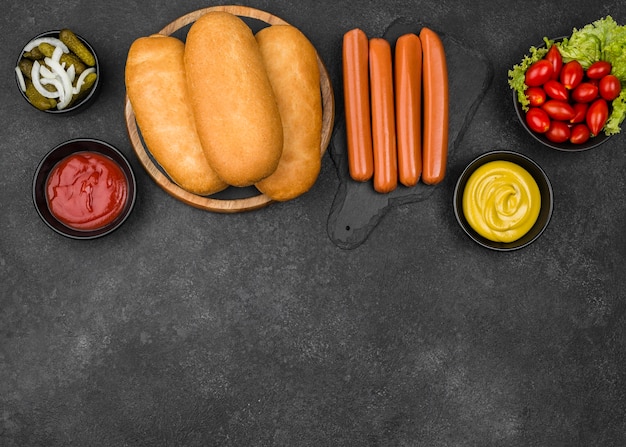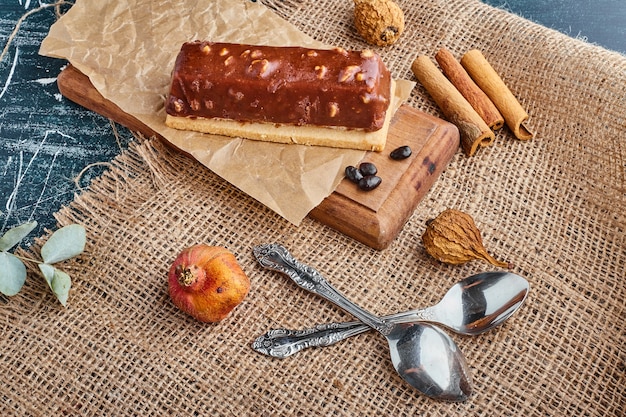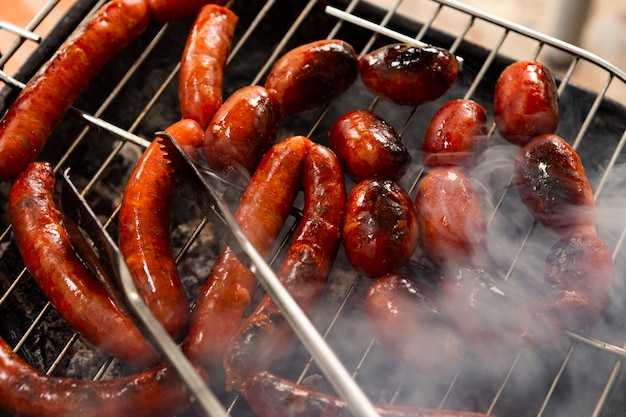You're staring at a pack of chorizo, eager to cook up a delicious meal. But then the nagging question pops into your head: "How long do I cook this stuff for?" It's a fair question, trust me, and one that's haunted me more than once. Chorizo comes in so many forms, it can be tricky knowing how to cook it just right.
But don't worry, fellow chorizo lover! I've spent hours in the kitchen, experimenting with different types of chorizo, cooking techniques, and timings. I'm here to share my hard-earned wisdom and help you achieve those perfect chorizo results, whether you're aiming for a sizzling pan-fried breakfast treat or a flavourful addition to a hearty paella. So grab a fork, maybe pour yourself a drink, and let's get started on this delicious journey!
(Part 1) The World of Chorizo: A Deep Dive

Before we even think about cooking times, let's get familiar with the different types of chorizo. This will make all the difference in choosing the right chorizo for your dish and understanding how to cook it to perfection.
1.1. spanish chorizo: The OG
When you think of chorizo, chances are you're picturing Spanish chorizo. It's a cured sausage, meaning it's been dried and preserved, giving it a long shelf life and a distinctive flavour. You'll find two main varieties of Spanish chorizo:
- Chorizo Espa??ol: This is the classic Spanish chorizo. It's subtly sweet and smoky, with a flavour that's been delighting Spaniards for centuries. It's a staple in paella, tapas, and countless other Spanish dishes.
- Chorizo Picante: If you like a bit of heat, this is the one for you. Chorizo Picante is spicier than Chorizo Espa??ol, thanks to the addition of cayenne pepper or other hot peppers. It brings a welcome kick to many dishes.
Spanish chorizo is typically quite firm and can be sliced or crumbled. Its flavour intensifies when cooked, and it tends to release a lot of fat as it cooks.
1.2. portuguese chorizo: A Spicy Journey
Portuguese chorizo, or "chouri??o" as it's known locally, is another cured sausage with a distinct personality. While it also includes pork, paprika, and garlic, Portuguese chorizo often features other spices like cumin, coriander, and oregano, giving it a unique flavour profile that's both earthy and aromatic. And yes, it can be quite spicy!
Portuguese chorizo is often thicker than its Spanish counterpart and can be sliced, diced, or grilled whole. Its texture is also quite firm, and it tends to release a lot of fat during cooking.
1.3. mexican chorizo: The King of Breakfast
Mexican chorizo is a world apart from its cured cousins. It's a fresh sausage, meaning it hasn't been dried or preserved. This means it has a shorter shelf life but also a more delicate flavour that's perfect for fresh, vibrant dishes.
Mexican chorizo is typically made with pork, chili peppers, and a blend of spices, giving it a distinct spicy kick. It's known for its crumbly texture, making it ideal for dishes like breakfast burritos, tacos, and huevos rancheros.
Unlike cured chorizo, Mexican chorizo doesn't release as much fat when cooked. It can be crumbled or cooked in chunks, depending on the dish.
(Part 2) cooking chorizo: Mastering the Methods

Now that we've explored the chorizo world, let's dive into the different ways to cook it. While pan-frying is the most common method, you can also grill, bake, and roast chorizo, each bringing its own unique twist to the final dish.
2.1. Pan-Frying: The Classic Approach
Pan-frying is the go-to method for many chorizo fans. It's quick, simple, and delivers fantastic results. Here's how to do it like a pro:
- Heat a large pan: Start with a heavy-bottomed skillet or frying pan over medium heat. You want the pan hot enough to sear the chorizo and render its fat.
- Add the chorizo: Spread the chorizo in a single layer, ensuring there's enough space for the pieces to cook evenly. Avoid overcrowding the pan, as this can lead to steaming instead of browning.
- Cook for 5-7 minutes per side: Cook the chorizo for about 5-7 minutes per side, or until it's browned and cooked through. Flip the pieces occasionally to ensure they brown evenly.
- Drain excess fat: Once the chorizo is cooked, remove it from the pan with a slotted spoon. Drain any excess fat, as this will prevent your dish from becoming greasy.
Remember, the cooking time will vary depending on the thickness of the chorizo and the heat of your pan. Keep a close eye on it and check for doneness by slicing open a piece. It should be cooked through with no pink remaining.
2.2. Grilling: A Smoky Delight
For a smoky, irresistible flavour, grilling is the way to go. Here's how to grill chorizo to perfection:
- Preheat your grill: Get your grill nice and hot, aiming for medium-high heat.
- Prepare your chorizo: Skewer the chorizo onto metal skewers or simply place it directly on the grill grate.
- Grill for 5-7 minutes per side: Cook for about 5-7 minutes per side, or until the chorizo is browned and cooked through. You'll know it's ready when it's nicely browned and firm to the touch.
- Rest and serve: Remove the chorizo from the grill and let it rest for a few minutes before serving. This will allow the juices to redistribute and ensure a tender, flavorful result.
As with pan-frying, keep an eye on your chorizo while it's grilling to prevent it from burning. If you notice any charring, simply move it to a cooler part of the grill.
2.3. Baking: A No-Fuss Approach
Baking chorizo offers a hands-off approach that's perfect for a busy weeknight or a larger batch. Here's how to bake chorizo to perfection:
- Preheat your oven: Set your oven to 350°F (175°C).
- Prepare the chorizo: Spread the chorizo in a single layer on a baking sheet lined with parchment paper. This will prevent sticking and ensure even browning.
- Bake for 20-25 minutes: Bake the chorizo for about 20-25 minutes, or until it's browned and cooked through. The cooking time might vary slightly depending on the thickness of the chorizo.
- Cool slightly and serve: Remove the chorizo from the oven and let it cool slightly before serving.
Baking chorizo is a great way to cook a large batch at once, and it's also ideal for adding chorizo to dishes like pasta or casseroles. The gentle heat of the oven helps to render the fat and infuse the chorizo with delicious flavour.
2.4. Roasting: For Deep, Rich Flavour
Roasting chorizo is similar to baking, but it takes things up a notch by creating a deeper, richer flavour. Here's how to roast chorizo to perfection:
- Preheat your oven: Set your oven to 400°F (200°C).
- Prepare the chorizo: Place the chorizo on a roasting rack set over a baking sheet. This will allow the heat to circulate around the chorizo, ensuring even cooking.
- Roast for 20-25 minutes: Roast the chorizo for about 20-25 minutes, or until it's browned and cooked through.
- Cool slightly and serve: Remove the chorizo from the oven and let it cool slightly before serving.
Roasting chorizo is a great way to add a smoky, complex flavour to dishes like salads or soups. The high heat of the oven helps to caramelize the sugars and create a delicious crust.
(Part 3) Timing is Everything: How Long to Cook Chorizo

Now we're getting to the heart of the matter: how long to cook chorizo. There's no single answer here, as the ideal cooking time depends on the type of chorizo, its thickness, and your desired level of doneness.
Here's a general guide to get you started:
3.1. Fresh Chorizo: Quick and Easy
Fresh chorizo, like Mexican chorizo, cooks quickly. It's usually sold in bulk, and you'll want to crumble it and cook it in a pan. The cooking time for fresh chorizo is typically 5-10 minutes, or until it's browned and cooked through. Since it's fresh, it needs less time to cook than its cured counterparts.
3.2. Cured Chorizo: A Bit More Patience Required
Cured chorizo, like Spanish and Portuguese chorizo, takes a little longer to cook because it's denser and more compact. You can usually cook cured chorizo in a pan, but you can also grill it, bake it, or roast it. For pan-frying, the cooking time is usually 10-15 minutes, or until the chorizo is browned and cooked through. For grilling, baking, or roasting, the cooking time will vary depending on the method, but it's usually around 20-25 minutes.
(Part 4) Perfect Doneness: Knowing When It's Ready
Knowing how long to cook chorizo is essential, but understanding how to tell when it's cooked properly is equally important. Here are some signs to look out for:
- Colour: Cooked chorizo should be nicely browned all over, with a slightly crispy exterior. The browning indicates that the fat has rendered, adding flavour and richness to the chorizo.
- Texture: The chorizo should be firm to the touch and not soft or mushy. This means it's cooked through and ready to eat.
- internal temperature: For extra peace of mind, you can use a meat thermometer to check the internal temperature. The chorizo should reach at least 155°F (68°C) to ensure it's cooked through and safe to eat.
If you're unsure whether your chorizo is cooked through, it's always best to cook it a little longer. Overcooked chorizo might be slightly drier, but it's better than undercooked and potentially unsafe to eat.
(Part 5) Chorizo cooking tips: A Pro's Secrets
Over the years, I've learned a few tricks that help me cook chorizo like a pro. Here are some of my favorites:
- Don't overcrowd the pan: If you cram too much chorizo into the pan, it will steam instead of brown. To avoid this, cook the chorizo in batches if necessary.
- Use a slotted spoon: When you're removing the chorizo from the pan, use a slotted spoon to drain any excess fat. This will help to prevent your dish from becoming greasy.
- Season to taste: Chorizo is already seasoned, but you can always add more flavor by seasoning it with salt, pepper, or other spices.
- Don't overcook it: Chorizo is best when it's cooked through but still slightly juicy. Overcooking can make it dry and tough, so keep a close eye on it to avoid overcooking.
(Part 6) Delicious chorizo dishes: Inspiration for Your Next Meal
Now that you've mastered the art of cooking chorizo, it's time to unleash your culinary creativity. Here are a few ideas for delicious chorizo dishes that are sure to impress your taste buds:
- chorizo paella: A classic Spanish dish, paella is a rice dish that's typically made with seafood, chicken, and chorizo. The chorizo adds a rich, smoky flavour and a satisfying texture to this iconic dish.
- chorizo and potato hash: A hearty and satisfying breakfast or brunch dish, chorizo and potato hash is a simple yet flavorful combination. The chorizo adds a spicy kick and a rich, meaty flavour to the potatoes.
- Chorizo and Chickpea Stew: A flavorful and nutritious stew that's perfect for a cold winter night. The chorizo adds a rich, smoky flavour and a hearty texture to the stew.
- Chorizo and Spinach Quesadillas: A quick and easy lunch or snack, chorizo and spinach quesadillas are packed with flavor and protein. The chorizo adds a spicy kick and a satisfying texture to the quesadillas.
- Chorizo and Bean Tacos: A classic Mexican street food, chorizo and bean tacos are delicious and filling. The chorizo adds a spicy kick and a rich, meaty flavour to the beans and tortillas.
- Chorizo stuffed peppers: A hearty and flavorful dinner, chorizo stuffed peppers are a crowd-pleasing dish. The chorizo adds a rich, smoky flavour and a satisfying texture to the peppers.
(Part 7) Beyond the Basics: Exploring Chorizo's Versatility
Chorizo isn't just for main courses. It can add a burst of flavour and texture to a wide range of dishes, from soups and salads to dips and pizzas.
- Chorizo Soup: A hearty and flavorful soup, chorizo soup is a great way to warm up on a cold day. The chorizo adds a rich, smoky flavour and a satisfying texture to the soup.
- Chorizo Salad: Add some spice and texture to your salads with chorizo. It pairs well with greens, tomatoes, onions, and other fresh ingredients. The chorizo adds a smoky, spicy kick and a satisfying crunch.
- Chorizo Dip: A delicious and easy dip, chorizo dip is perfect for parties or gatherings. It can be made with chorizo, cheese, and other spices. The chorizo adds a rich, smoky flavour and a satisfying texture to the dip.
- Chorizo Pizza: Elevate your pizza game with chorizo toppings. The spicy sausage adds a delicious kick to any pizza crust. The chorizo adds a smoky, spicy flavour and a satisfying texture to the pizza.
- Chorizo Pasta: Add chorizo to your pasta dishes for a flavourful and satisfying twist. The chorizo adds a smoky, spicy flavour and a satisfying texture to the pasta.
(Part 8) Chorizo: A culinary journey
Cooking chorizo is a journey of discovery, a journey that starts with understanding the different types of chorizo and how they're best cooked. It's a journey that involves learning the nuances of timing, texture, and flavour. And it's a journey that leads you to a world of delicious possibilities, from classic Spanish paella to innovative chorizo pizza.
So embrace the journey, experiment with different recipes, and most importantly, enjoy the delicious results. Remember, there's no right or wrong way to cook chorizo, just your own personal way to make it perfectly delicious.
FAQs
Here are some common questions about chorizo, along with their answers:
8.1. What is chorizo made of?
Chorizo is a cured or fresh sausage made from pork, paprika, garlic, and other spices. The exact ingredients and proportions vary depending on the region and type of chorizo. Some chorizo recipes might also include other ingredients, like chili peppers, cumin, coriander, or oregano, giving each type its unique flavour profile.
8.2. Is chorizo spicy?
Chorizo can be spicy, but the level of spiciness varies depending on the type of chorizo and the amount of chili peppers used. Spanish chorizo is typically less spicy than Mexican chorizo, but there are exceptions to this rule. If you're sensitive to spice, it's best to check the ingredients list or ask your butcher about the spiciness level.
8.3. How can I tell if chorizo is cooked?
Cooked chorizo should be browned all over and have a firm texture. It should also be cooked through, meaning there should be no pink remaining. You can also check the internal temperature with a meat thermometer, which should reach at least 155°F (68°C).
8.4. Can I freeze chorizo?
Yes, you can freeze chorizo. To freeze it, simply wrap it tightly in plastic wrap or aluminum foil. Frozen chorizo will last for several months in the freezer. When you're ready to use it, thaw it in the refrigerator overnight.
8.5. What are some good chorizo recipes?
There are endless possibilities when it comes to chorizo recipes! Some popular options include chorizo paella, chorizo and potato hash, chorizo and chickpea stew, chorizo and spinach quesadillas, chorizo and bean tacos, and chorizo stuffed peppers. You can also get creative and experiment with different chorizo recipes, incorporating it into soups, salads, dips, and pizzas. The possibilities are endless!
Everyone is watching

Corn on the Cob: The Ultimate Guide to Perfectly Cooked Ears
Healthy MealsAh, corn on the cob. Just the name evokes images of sunny days, barbecues, and that sweet, juicy flavour that ...

Perfect Pork Roast Oven Cooking Time: A Guide to Delicious Results
Healthy MealsThere's something truly satisfying about a perfectly roasted pork. The aroma alone is enough to make your mout...

Scallops: The Ultimate Guide to Perfect Cooking
Healthy MealsAh, scallops. Those delicate, sweet, and utterly delicious morsels of the sea. They hold a special place in my...

Ham Cooking Time: How Long to Bake, Smoke, or Boil a Delicious Ham
Healthy MealsAh, ham. It's a classic, isn't it? A real crowd-pleaser, especially around holidays. And when done right, it'...

Spaghetti Squash: The Ultimate Guide to Cooking and Serving
Healthy MealsRemember that time you saw spaghetti squash at the supermarket, looking all bumpy and strange, and thought, "W...
